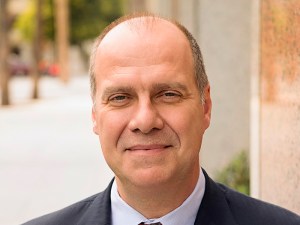Concerned About Potential Changes to 1031s? DSTs May Be the Answer
Delaware Statutory Trusts could provide even greater flexibility, argues Reid Thomas of JTC Americas.
Investors—and the real estate industry at large—are rightly worried about the Biden administration’s proposed changes to 1031 exchanges. After all, 12 percent of all real estate sales transactions between 2016 and 2019 involved a like-kind exchange. The less available 1031s are, the less demand there will be for any number of interrelated real estate investments.
But if the new rules work as I think they might, there’s a solution that could provide a workaround: Delaware Statutory Trusts, or DSTs.
DSTs, which allow sponsors to hold titles to multiple income-producing commercial properties, already offer investors numerous advantages, and chief among them is the opportunity to diversify holdings and passively invest (DSTs don’t require each beneficial owner to oversee management). Thanks to a 2004 IRS ruling, DSTs can also be used for 1031 exchanges and provide flexibility to those seeking 1031-eligible properties, as they won’t need to find the ideal replacement in 45 days like they would with a traditional exchange.
With potential 1031 changes on the horizon, DSTs might become even more advantageous—as long as the rules are written a certain way.
Possible Scenarios
For instance, if the new limit for participating in a 1031 exchange is $500,000, the question is how that number gets calculated. If it refers to gains by the trust, then DSTs may be excluded from 1031s completely, as they can involve dozens of individuals and sales in the millions. But if that $500,000 cap refers to personal capital gains, then fractional owners are in luck. Many trusts have minimums of around $100,000 for 1031 participants, meaning your personal gains could fall well below the limit.
The second thing we don’t know is whether the limit will be on capital gains or on the individual’s income. If the program is eliminated for incomes over $500,000, many individuals will be completely excluded. But if the $500,000 is based on the investment, and there’s no rule stating a person cannot participate in multiple 1031 exchanges, then a DST could be a way to avoid greater taxes down the road.
Imagine you purchase a property for $400,000 and sell it for $1 million. Your gains would be $600,000, beyond the proposed limit, and therefore you would be excluded from the program. But what if you put that $600,000 into two DSTs, with a $300,000 investment in each? If the gains were the same, or $300,000 for each investment, they would fall under the threshold, so they could each be rolled into a new DST as part of a new exchange.
Of course, there may be an overall individual limit created as well. We just don’t know yet. What we can be fairly certain of is that there will be a frenzy of 1031 investment this year, followed by a cooling-off period if the law gets passed.
At that point, it’s reasonable to think we’ll see a big increase in DST investment as well, which in turn may increase demand and raise prices for multifamily or commercial properties. Since DSTs often have a set time frame, it might be that 5-10 years after this increase in activity we’ll see another resurgence as investors participate in the next step of their 1031 plans.
But investors and DST sponsors looking to take full advantage of this new activity will need to come prepared. With DSTs, more people (investors, financial advisers, accountants) require more frequent access to reports, and those reports will need to include a wide range of information, be it occupancy rates, rent collections, or key performance metrics. In this respect, a fund administrator with DST and 1031 exchange experience can help.
While we may not yet know what the new 1031 rules will be exactly, there’s a good chance DSTs will become a bigger part of real estate investment strategies moving forward. Now’s the time to start thinking about how to make them as effective and attractive to investors as possible.
Reid Thomas is the managing director for JTC Americas, a tech-enabled 1031, OZ, EB-5 and PE fund administrator.








You must be logged in to post a comment.